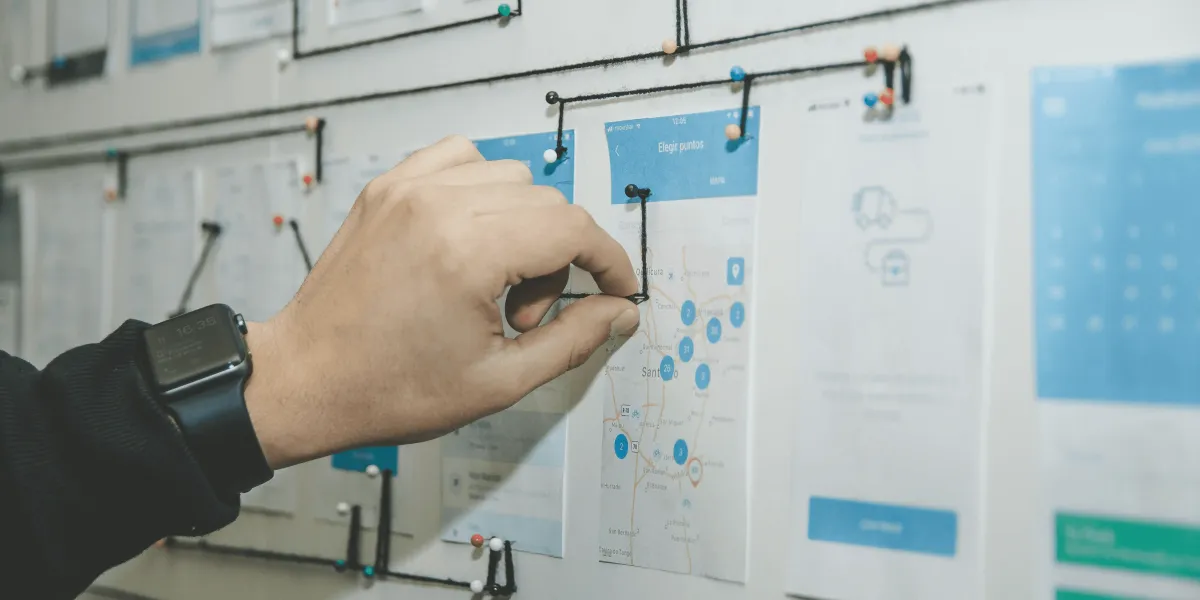In this article, you’ll learn:
When every buyer can analyze offers from dozens of companies in minutes, price management is no longer the main tool for increasing the customer base. Other factors have come to the fore, including business reputation and emotional attachment to a particular brand. And they largely depend on what kind of content a company distributes online.
That is why content marketing is becoming the main tool for business promotion. According to HubSpot, more than 80% of marketers in the United States actively use content marketing. However, the Content Marketing Institute provides no less interesting statistics — only 50% of the specialists surveyed have a clear content management lifecycle plan.
Therefore, even when it comes to giant corporations with multimillion-dollar budgets, most content is generated by businesses chaotically. Companies go blindly, losing money and customers due to the lack of a strategy and clearly defined workflows. To overcome this problem and increase the effectiveness of your marketing policy, you should familiarize yourself with content lifecycle management best practices, which we will discuss in more detail in this article.
Main Stages of Content Lifecycle Management
To improve content quality and get the most out of it, you first need to build the right workflows. We'll review the 8 main stages of the content life cycle and provide tips on how to optimize them.
1. Setting Goals
We've already mentioned above that businesses create most of their content chaotically. But this approach is not the best. By applying untested methods, you often get unexpected results — usually worse than you expected.
Therefore, the content generation process should start with setting goals, for example:
- Increasing organic traffic;
- Increasing conversion rates;
- Improving engagement and loyalty rates;
- Building an expert reputation on the Internet;
- Increasing the number of leads;
- Reducing customer outflow, etc.
Once you have goals, you can determine how to achieve them and build marketing strategies, for example:
- Place guest posts on top blogs and engage opinion leaders to build your brand's expert reputation;
- Create detailed reference materials written in plain language to retain customers and maintain a subscriber base;
- Regularly publish user-generated content (UGC) to increase loyalty and build a layer of brand advocates.
2. Allocating Resources
With a clear plan of action, you no longer have to act at random. With proven methods, you can predict the results — based on your statistics, competitors' data, or independent research. And you should have several plans, considering the entire range of possible key performance indicators (KPIs).
But even more importantly, you will be able to determine the amount of resources needed to achieve your goals:
- Working hours. Knowing the time spent and the estimated timeframe of the project, you can determine how many employees are needed or choose a contractor to handle certain tasks.
- Hardware and software. HubSpot reports that almost 50% of companies focus on video and other multimedia forms of content. To work with them, special tools are required. It can be special marketing software with high subscription costs, for instance.
- Money. The above aspects invariably translate into costs that can be included in a company's marketing budget.
Estimated resource expenditures can be optimized by comparing different marketing campaign options and expected results. This allows businesses to choose the ideal scenario according to the current market situation and priority goals.
3. Building a Team
One of the content management best practices is a clear distribution of authorities and areas of responsibility. The company should have people responsible for creating content who can explain their decisions, correct mistakes, and report on achieving certain results.
Therefore, you definitely need a separate team for content generation. To create it, you don't have to expand your staff or distract employees from their current tasks. They can devote only a part of their working time to content management. But they definitely need clear assignments — they can be responsible for the following tasks:
- Planning marketing campaigns and forecasting the expected results of their launch;
- Creating content plan;
- Content generation;
- Quality control and testing;
- Content distribution;
- Analyzing the effectiveness of marketing campaigns.
As a rule, the first adjustments to plans begin at this stage of the content management life cycle. It is not always possible to assemble the perfect team right away. The company may simply not have an employee with the right qualifications, and then you will have to look for a new employee or hire contractors. In any case, this will affect both time and financial resources.
4. Creating a Content Distribution Plan
Yes, this stage should precede content generation, because the nature of your message will depend on how you plan to broadcast it. To choose the best communication channels for content distribution, you should consider the following factors
- Your target audience
Young people are more likely to be interested in a creative video on TikTok, while older people would rather read a text post on Facebook. You should also pay attention to other characteristics, such as socioeconomic, geographic, etc. For example, the most popular messenger in Europe is WhatsApp, and the most common in the US is Facebook Messenger;
- Business area
If your company provides IT services in the B2B segment, it will be reasonable to distribute content on the company’s blog and specialized technical platforms. And the most effective communication channel for a small online store will be contextual advertising (PPC).
- Tone of voice
Businesses today tend to communicate informally with customers. For this, they often use short videos like TikTok, Instagram Reels, and YouTube Shorts. However, there are still areas where a professional approach is also effective, allowing you to demonstrate business expertise. It is important to not only choose the right tone of voice but also to keep it consistent across all channels, taking into account their specifics.
The nature of the content will largely depend on the channels of its distribution. They determine the tone of voice, the degree of the audience's emotional involvement, and even the ways to achieve conversion. That is why their choice belongs to the early stages of the content marketing lifecycle.
5. Creating a Quality Control System
According to HubSpot surveys, 83% of marketers agree that the quality of content is much more important than its amount. Therefore, before distributing it, you should check and test it — in a controlled environment or a real scenario with a limited audience size. A strong argument in favor of this statement is the frequent scandals that cause multimillion-dollar losses to large companies.
Therefore, a mandatory stage of the content lifecycle will be quality assurance. It requires the creation of standardized workflows for each type of content, for example:
- organizing focus groups to review videos;
- proofreading new articles by the head of the department;
- displaying images to some site visitors as part of A/B testing.
Since we're talking about sustainable workflows, you should assign people responsible for content release. These managers should be the ones who give the final approval for information distribution.
6. Content Creation
If you do everything right, you will have all the necessary initial data at this content life cycle stage — strategic goals, implementation methods, communication channels for distributing content, and characteristics of the target audience. Use this information to generate high-quality content that meets the needs, expectations, and preferences of your consumers.
Of course, the content creation process will be different for each company. But to achieve better results, check out the following tips:
- Use trends to engage consumers in the short term but remember to create "evergreen" content that will work well in the long term.
- Build an expert image of your business. This works great even if your tone of voice is informal. In this case, your brand can be a "friend" or "big brother" always ready to help.
- Create your own style but remember to look around you. Regularly analyze competitors' marketing campaigns to improve your content management lifecycle strategy.
- Conduct A/B testing. Even if your content seems perfect, there is always room for improvement. Organize studies in which you will show different versions of content to consumers from the same target audience segments.
- Analyze the effectiveness of marketing campaigns. Track key indicators such as coverage, engagement, conversion, financial results, etc.
7. Storing and Organizing Content
Content doesn't stop being useful even after the end of a marketing campaign. First, it can work without active promotion, especially when it comes to guides on "evergreen" topics, well-optimized articles, and useful infographics. Secondly, you can continue to use it in the future:
- Look for inspiration for new creatives;
- Analyze the dependence of the final results on certain content features;
- Correct mistakes;
- Publish it again after the update.
Therefore, one of the content lifecycle management best practices is to save working materials after distribution. It's best to keep all versions at hand — from the first drafts to the final release. You should also provide shared access to content for the entire team involved in its development. By doing so, you'll optimize all stages of the workflow, from planning new campaigns to their creation, quality control, and analytics. Leveraging strategic planning software can greatly enhance the efficiency of managing content lifecycle by streamlining the process from planning new campaigns to their creation, quality control, and analytics.
Another useful tip is to develop a convenient content organization system. When it comes to regular launches of multichannel marketing campaigns with a large amount of text and multimedia materials, simple sorting in cloud storage may not be enough.
One of the options here is to connect a specialized digital asset management (DAM) system. It will allow you to quickly select the materials you need based on the following criteria:
- Dates of creation and last modification;
- Authors and current file owners;
- Metadata, such as video duration or photo resolution;
- Keywords in titles, texts, or descriptions;
- Custom tags - belonging to certain projects, departments, or marketing campaigns.
By connecting to Google Drive digital asset management system Pics.io, you get much more convenient and efficient file management tools. You don't have to migrate to a new cloud storage service to enjoy all the features you need.
8. Repurposing your Content
If the content meets your expectations, you can use it again, maximizing its usefulness and optimizing your marketing costs. But remember one of the content management best practices — the mandatory revision of materials before a new publication. Be sure to check all the facts, remove irrelevant information, and add a couple of new elements that will help refresh your message.
Another tip is to reorganize the content so that new materials do not look like an exact copy of the previous ones. The most effective approaches in this direction are:
- A complete change of format. For example, you can turn a video into a blog post or an infographic into a short guide.
- Splitting large-scale content into smaller parts. Make several YouTube Shorts from a large review or split an expert publication into many posts for social media.
- Adapting content for other stages of the sales funnel. For example, some materials from an introductory e-book can be used in instructions for loyal customers.
- Adaptation for other segments of the target audience. You can change tone of voice and highlight other unique advantages of your business.
But remember that the content lifecycle ends sooner or later. If certain materials are hopelessly outdated or no longer produce the expected results, you should exclude them from your marketing strategy. Moving such content from the main repository to an archive, such as a separate cloud folder or even a local hard disk, would be a good idea.
How to Choose Content Lifecycle Management Tool: Best Practices
Start with the functionality of the tool. To determine your needs, you should ask yourself a simple question — which stage of the workflow is currently causing the most difficulties and should be optimized. If it's strategic planning, your ideal tool should offer project collaboration features. If you have quality control issues, you need fast and convenient file sharing, and if you don't like your current storage system, you need advanced search.
Remember that such a platform should be accessible to all team members, regardless of their roles, responsibilities, and authorities. Therefore, you need an all-in-one solution that will support multiple options for integrating with other software — cloud storage, graphic and text editors, video processing systems, etc.
Choose an application based on your strategic business plans. If you intend to expand, the tool should be easily scalable, allowing you to connect new workplaces. But remember to keep your employees' interests in mind. The platform should have a user-friendly interface that can be mastered in a short time without specific technical skills.
Manage Content Lifecycle with a DAM System
Pics.io digital asset management (DAM) platform will help you optimize your content management life cycle process. Its advantages are as follows:
- The possibility to use your own cloud storage. If you already have a subscription to Google Drive or Amazon S3, you don't have to buy additional disk space. It allows you to use all the necessary functions without putting too much strain on your marketing budget.
- Version control system. The platform allows you to track the history of project development by viewing all file versions in one place. You can accept or reject changes by automatically sending notifications to other participants in the workflow in Slack or by email.
- Quickly share and receive files from contractors, partners, and customers via branded portals. They can be password-protected and equipped with other privacy settings.
- Convenient branding and watermarking tools. They help create high-quality content that positively affects the business's reputation and protect it from illegal use.
- The ability to customize permissions for individual users and workgroups. DAM system allows you to assign them different roles, as well as restrict access to certain categories of materials or features.
- A large number of integrations. You can connect Pics.io DAM to Adobe Premiere Pro, Hootsuite, Salesforce, Trello, and many other applications with Zapier.

Conclusion
The content marketing lifecycle is divided into eight stages. It begins with strategic planning, which includes setting goals, allocating the necessary resources, and building a team. The following stages address tactical tasks, such as developing a distribution plan, creating a quality control system, and generating content. But the lifecycle doesn't end there — you should create a convenient content storage system and use it in the future, whether for republishing, finding inspiration, or improving analytics.
The latter stages are essential because they allow you to get more value from the existing content, increasing the effectiveness of your marketing policy. Therefore, to optimize your workflows, you can benefit from specialized tools such as digital asset management (DAM) systems. DAM makes it much easier to find the materials you need, allows you to set up access rights for users and workgroups, and view the full version history. The Pics.io platform allows you to quickly share files in your collections and accept materials from external contractors and customers.
Did you enjoy this article? Give Pics.io a try — or book a demo with us, and we'll be happy to answer any of your questions.




